Behavioral Neuroscience: Essential Concepts for Reading Comprehension
Behavioral neuroscience explores the intricate connections between the brain, nervous system, and behavior. It examines how neural processes influence actions, emotions, and cognitive functions, drawing insights from biology, psychology, and medicine. RC passages on this topic often discuss the biological underpinnings of behavior, the impact of hormones and neurotransmitters, and advancements in brain imaging. Understanding these concepts equips readers to analyze how neuroscience explains human and animal behavior.
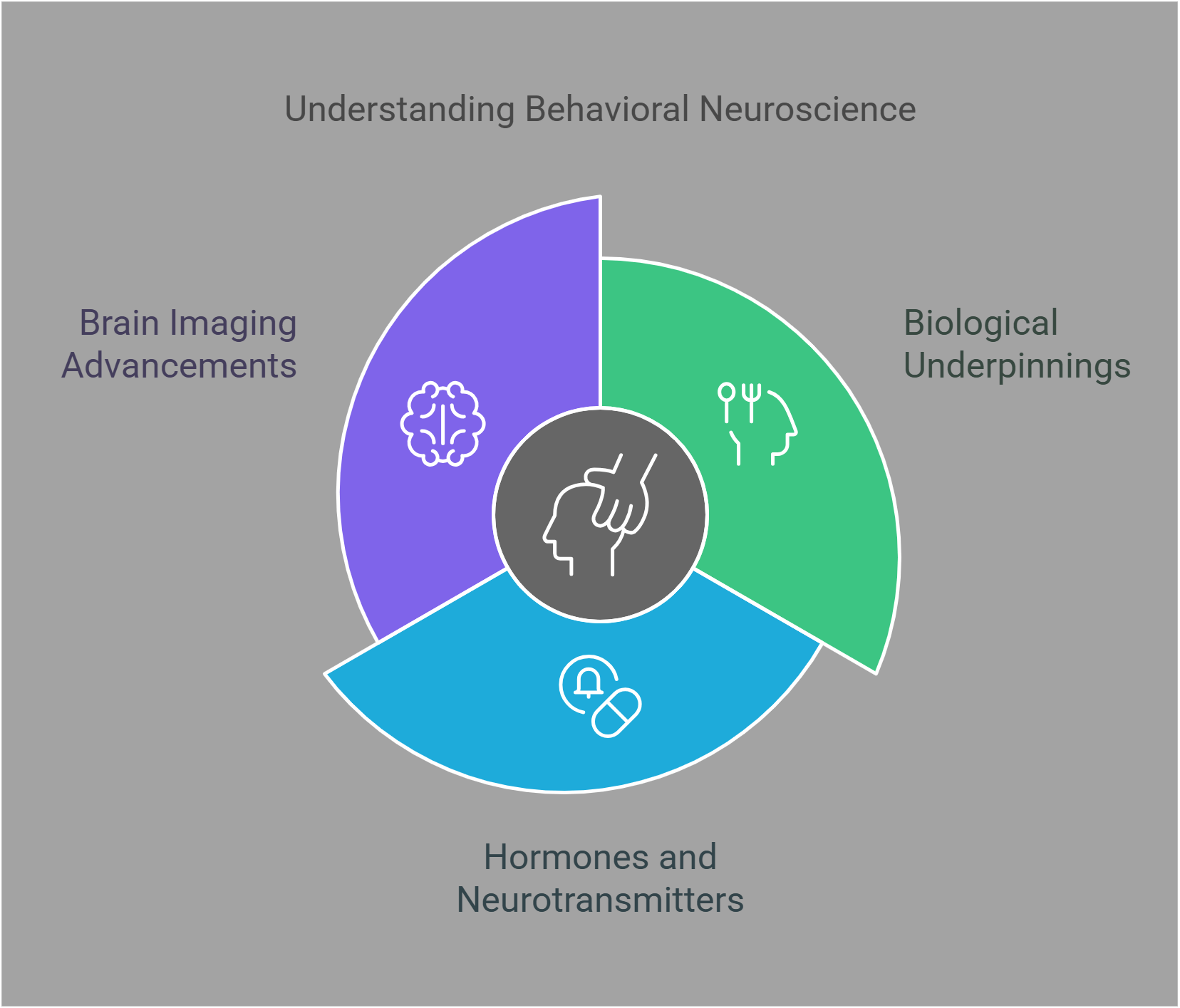
🔑 Key Concepts
This guide explores the following essential behavioral neuroscience concepts:
- Neuroplasticity
- Synaptic Transmission
- Brain-Behavior Relationship
- Hormonal Regulation of Behavior
- Dopaminergic Pathways
- Limbic System Functions
- Stress Response Mechanisms
- Neural Correlates of Emotion
- Brain Imaging Techniques
- Circadian Rhythms
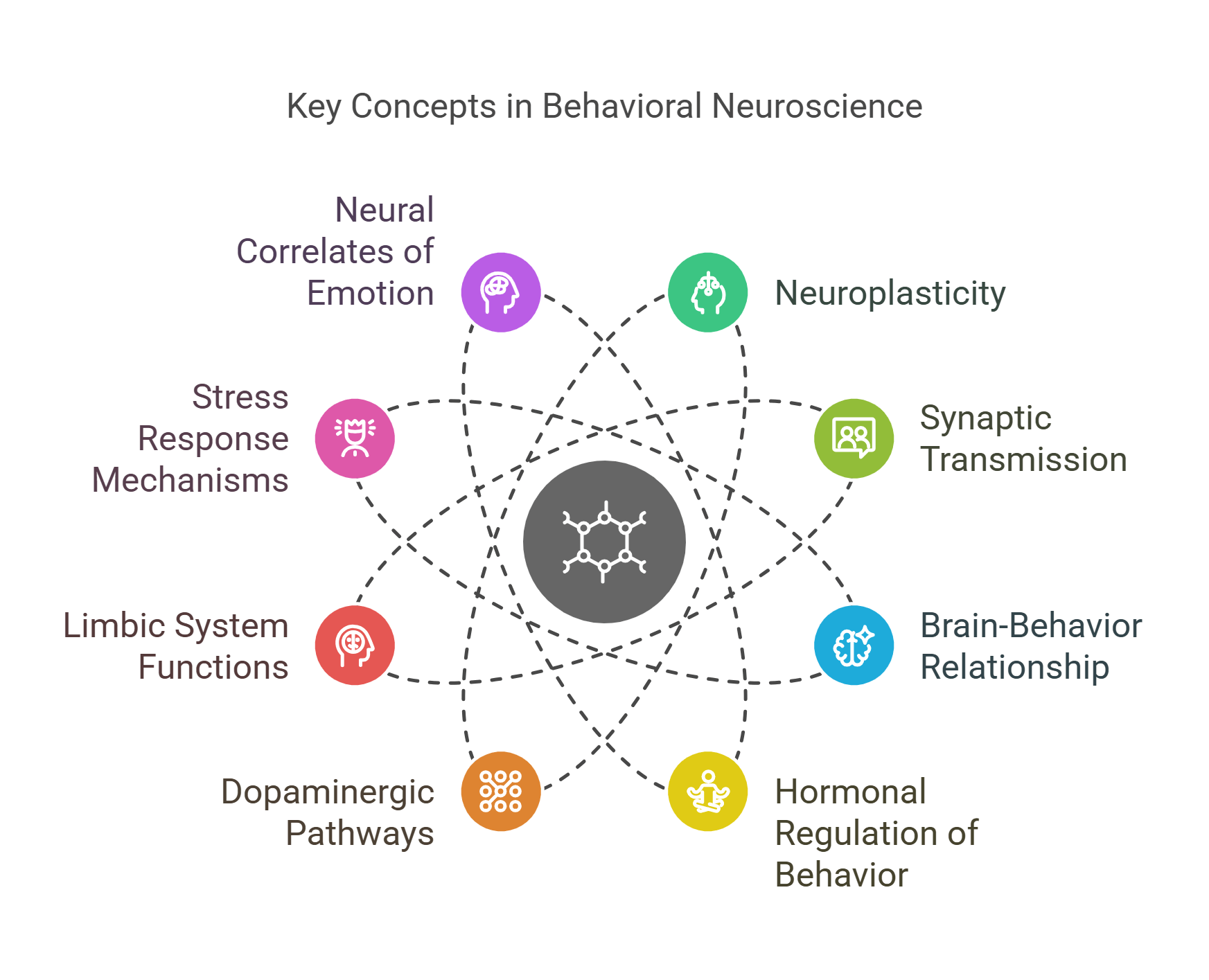
1. Neuroplasticity
Neuroplasticity refers to the brain’s ability to reorganize itself by forming new neural connections. It enables learning, memory formation, and recovery from injury.
- Key Features:
- Structural Plasticity: Changes in the brain’s structure, such as the growth of new neurons.
- Functional Plasticity: Rewiring of existing neural pathways to compensate for damage.
- Applications:
- Rehabilitation for stroke or brain injury.
- Learning new skills or languages.
📘 Example: Musicians have enhanced motor areas in the brain due to repeated practice.
Explained Simply: Neuroplasticity is like the brain’s ability to remodel itself, adapting to new challenges or damage.
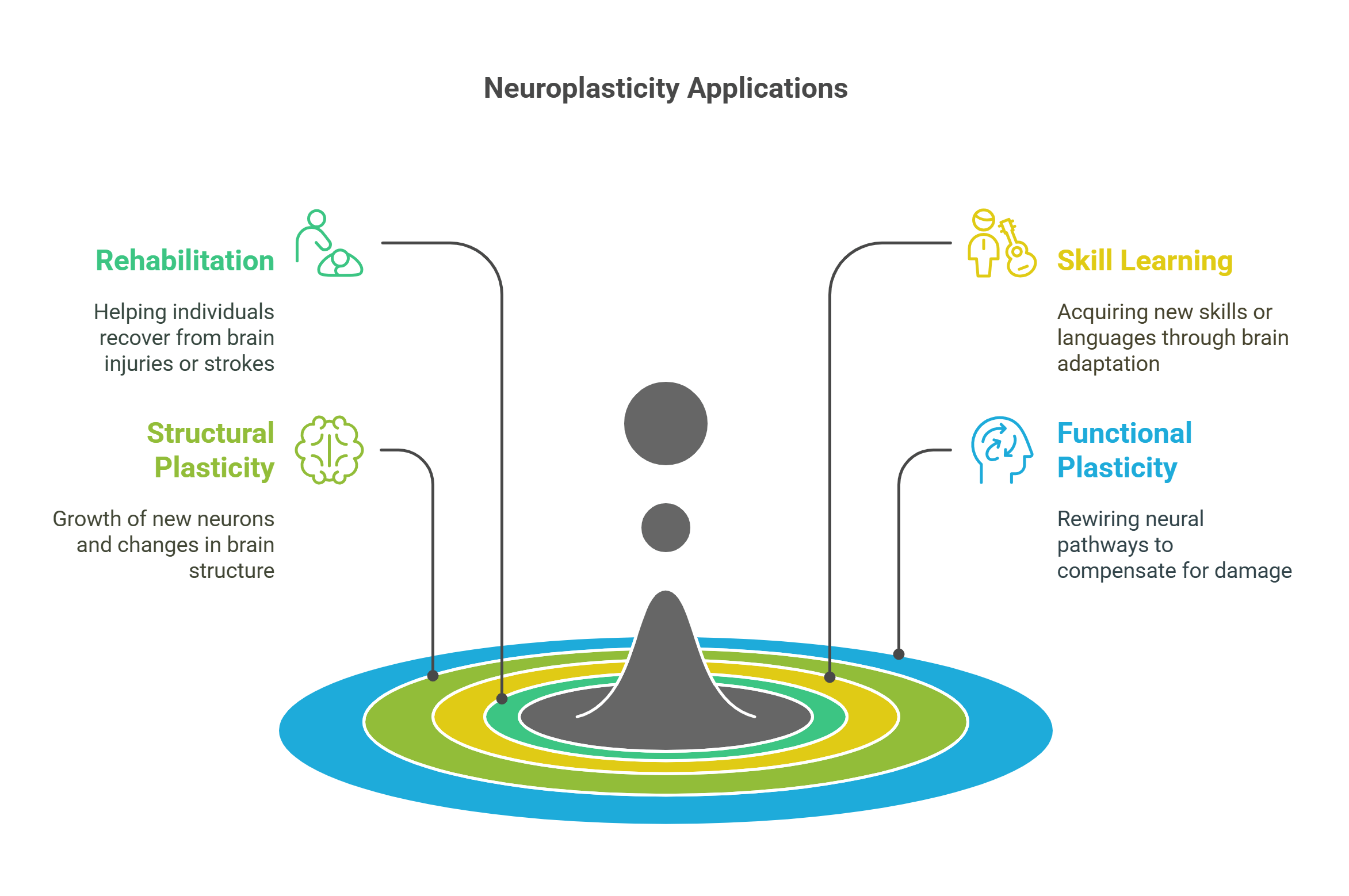
2. Synaptic Transmission
Synaptic transmission is the process by which neurons communicate with each other through chemical or electrical signals.
- Steps in Transmission:
- Release of neurotransmitters from the presynaptic neuron.
- Binding to receptors on the postsynaptic neuron.
- Electrical signal generation in the receiving neuron.
- Key Neurotransmitters:
- Dopamine (reward and motivation).
- Serotonin (mood and emotion).
- Acetylcholine (memory and muscle activation).
📘 Example: A lack of dopamine transmission is linked to Parkinson’s disease.
Explained Simply: Synaptic transmission is like sending a message from one neuron to another across a tiny gap.
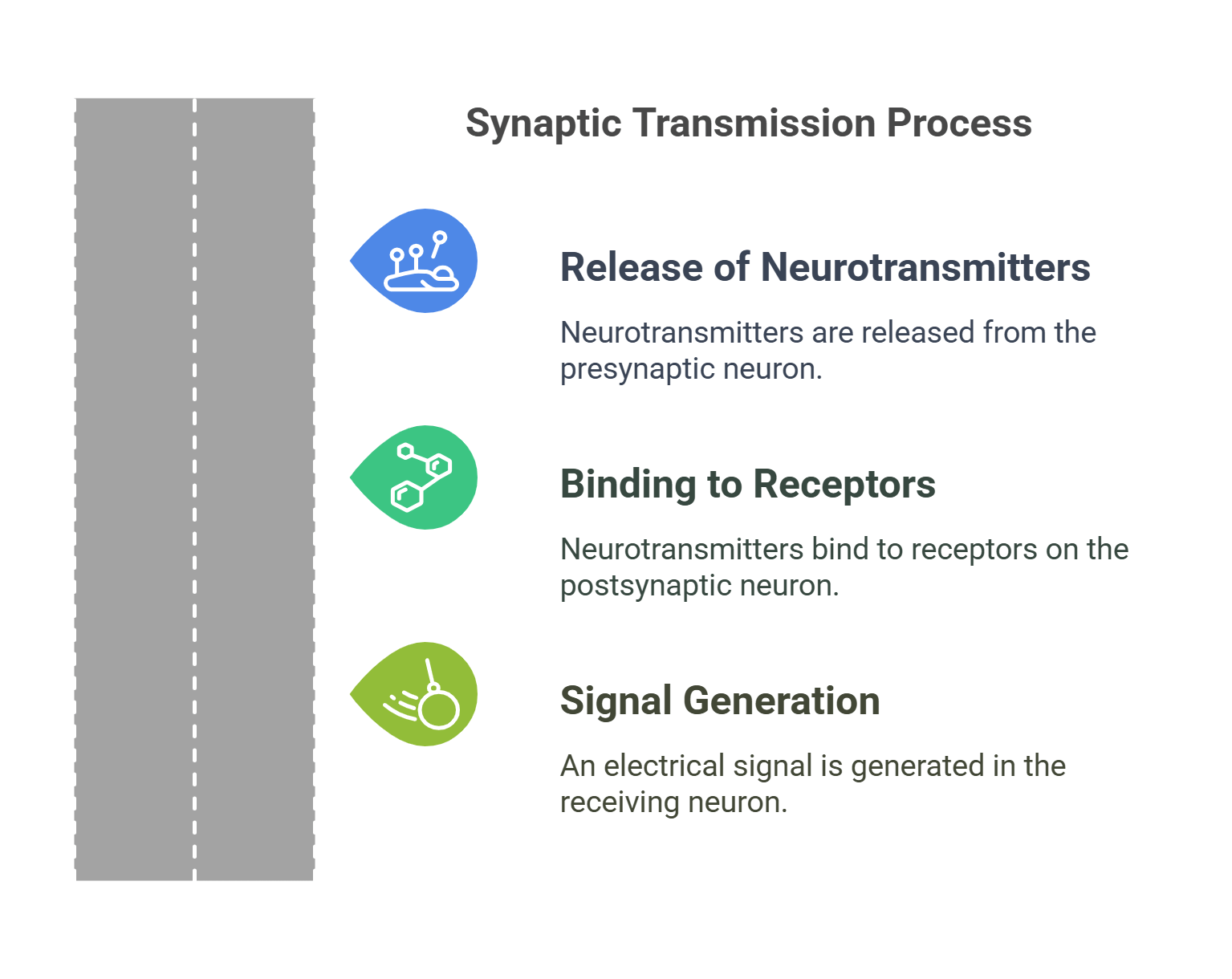
3. Brain-Behavior Relationship
The brain-behavior relationship examines how specific brain regions and neural processes influence behavior.
- Key Insights:
- The frontal lobe governs decision-making and impulse control.
- The occipital lobe processes visual information.
- Applications:
- Understanding brain injuries helps predict behavioral changes.
- Linking brain activity to mental disorders such as depression.
📘 Example: Damage to the prefrontal cortex can lead to impulsive or socially inappropriate behavior.
Explained Simply: The brain-behavior relationship is like a control system where different regions regulate specific actions.
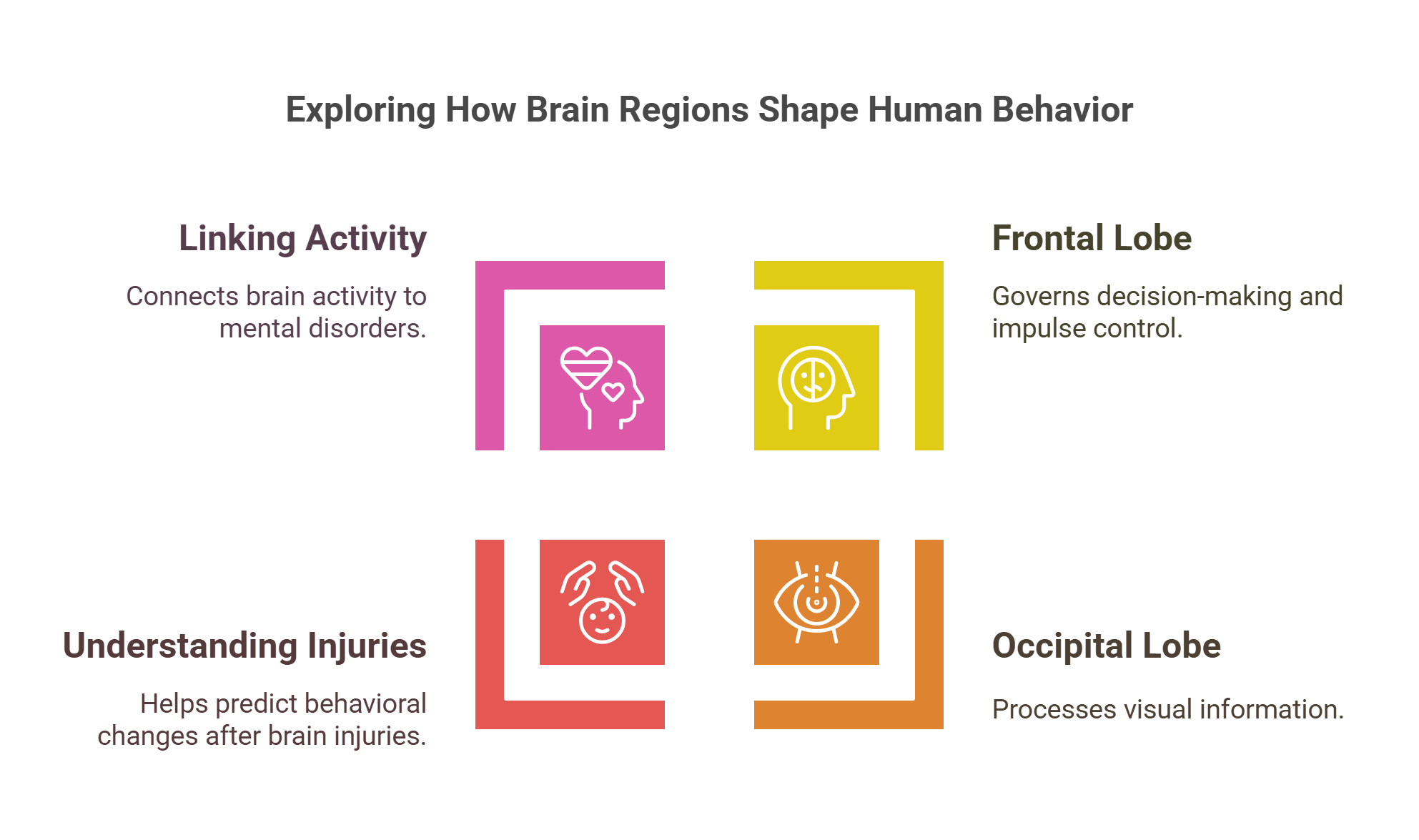
4. Hormonal Regulation of Behavior
Hormones play a crucial role in influencing mood, behavior, and physiological processes. Produced by endocrine glands, they travel through the bloodstream to target organs and the brain.
- Key Hormones and Effects:
- Cortisol: Regulates stress response.
- Oxytocin: Enhances social bonding and trust.
- Testosterone: Influences aggression and competitiveness.
📘 Example: Elevated cortisol levels during stress can impair memory.
Explained Simply: Hormonal regulation is like a chemical messaging system that shapes emotions and actions.
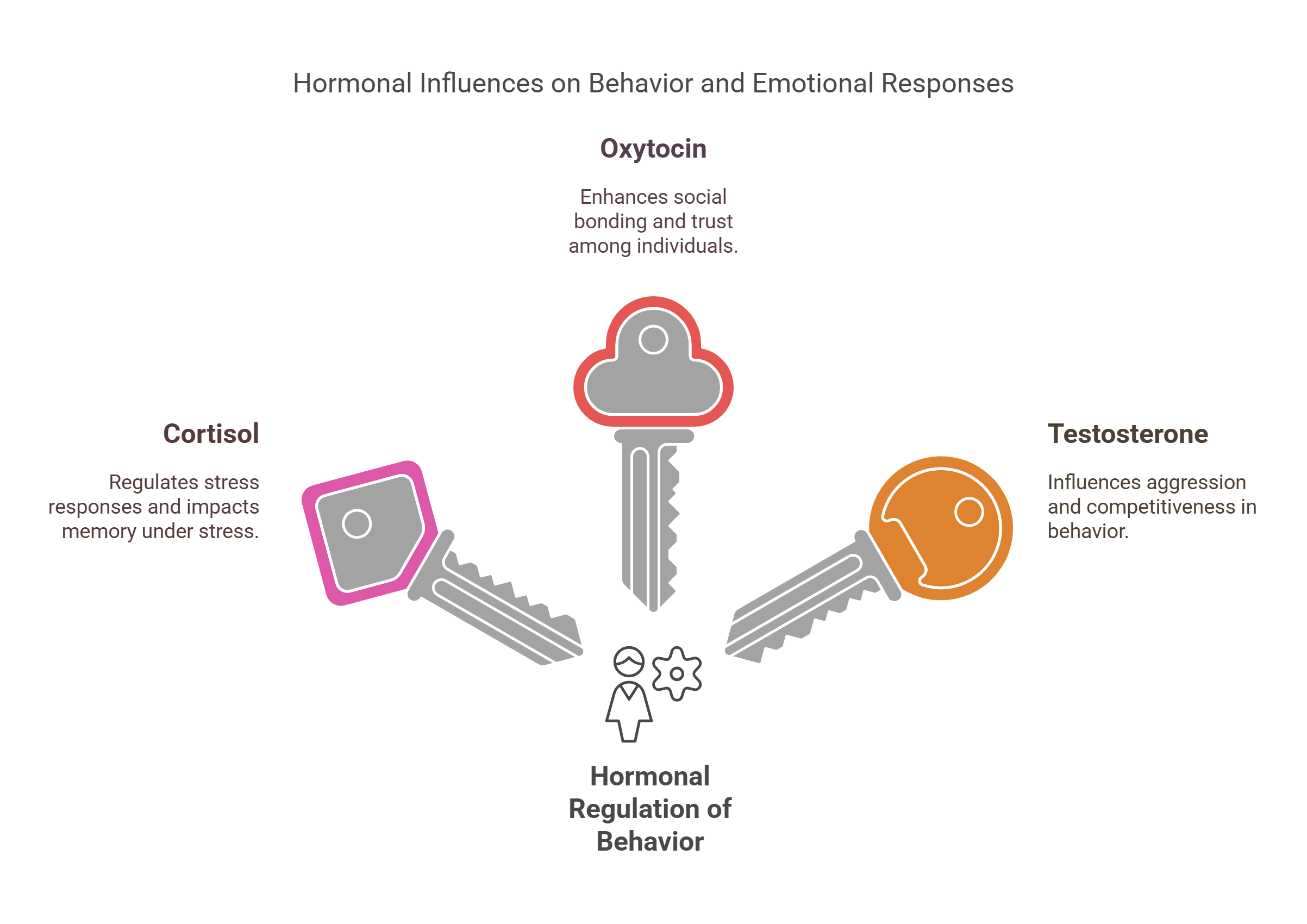
5. Dopaminergic Pathways
Dopaminergic pathways refer to neural circuits in the brain that use dopamine as their primary neurotransmitter. These pathways are involved in reward, motivation, and motor control.
- Major Pathways:
- Mesolimbic Pathway: Associated with reward and addiction.
- Nigrostriatal Pathway: Controls voluntary movement.
- Clinical Relevance:
- Overactivity is linked to schizophrenia.
- Underactivity is associated with Parkinson’s disease.
📘 Example: The mesolimbic pathway is activated when consuming pleasurable foods.
Explained Simply: Dopaminergic pathways are like reward highways in the brain, guiding motivation and pleasure.
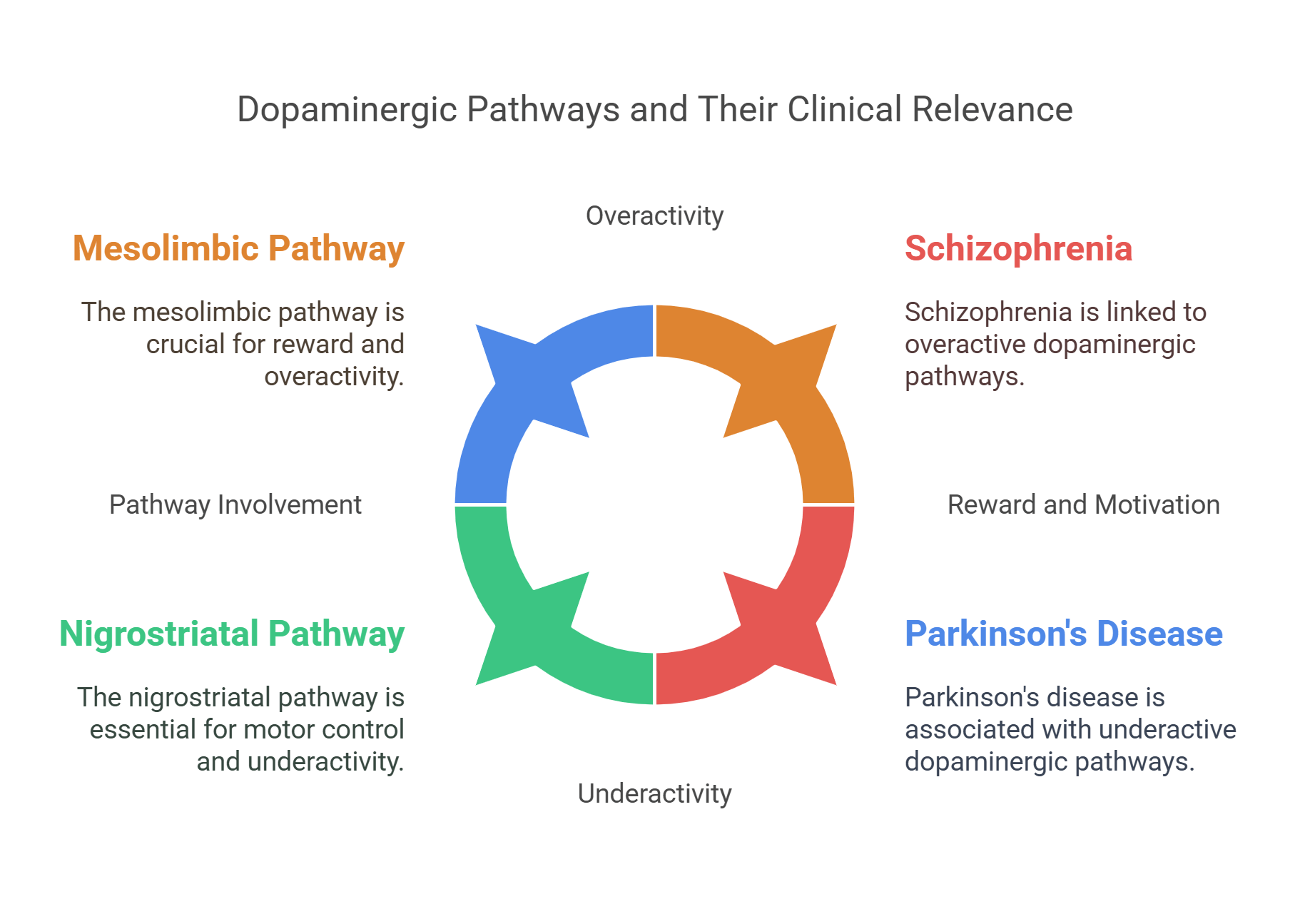
6. Limbic System Functions
The limbic system, often called the “emotional brain,” regulates emotions, memory, and motivation.
- Key Structures:
- Amygdala: Processes fear and emotional responses.
- Hippocampus: Facilitates memory formation.
- Hypothalamus: Maintains homeostasis and controls the endocrine system.
📘 Example: The amygdala triggers a fight-or-flight response when sensing danger.
Explained Simply: The limbic system is like the brain’s emotional headquarters, managing feelings and memories.
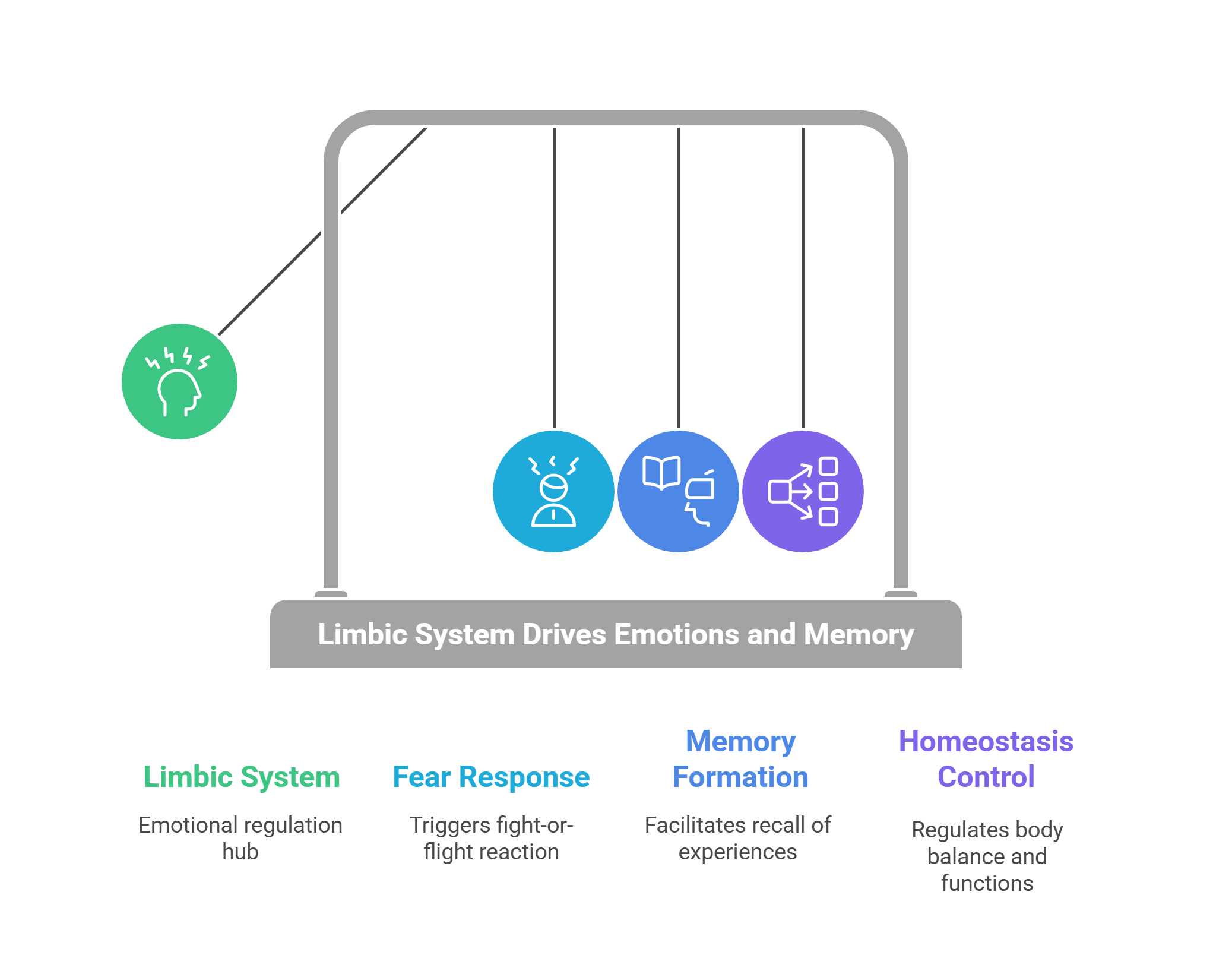
7. Stress Response Mechanisms
The stress response, also known as the “fight-or-flight” reaction, involves physiological and behavioral changes to prepare the body for perceived threats.
- Key Phases:
- Alarm Stage: Activation of the hypothalamic-pituitary-adrenal (HPA) axis and release of cortisol.
- Resistance Stage: The body sustains efforts to manage stress.
- Exhaustion Stage: Prolonged stress depletes energy reserves, leading to burnout.
- Chronic Stress Effects:
- Impaired immune function and mental health issues.
📘 Example: Exam stress triggers increased heart rate and alertness due to cortisol release.
Explained Simply: The stress response is like a high-alert system, preparing the body for immediate action.
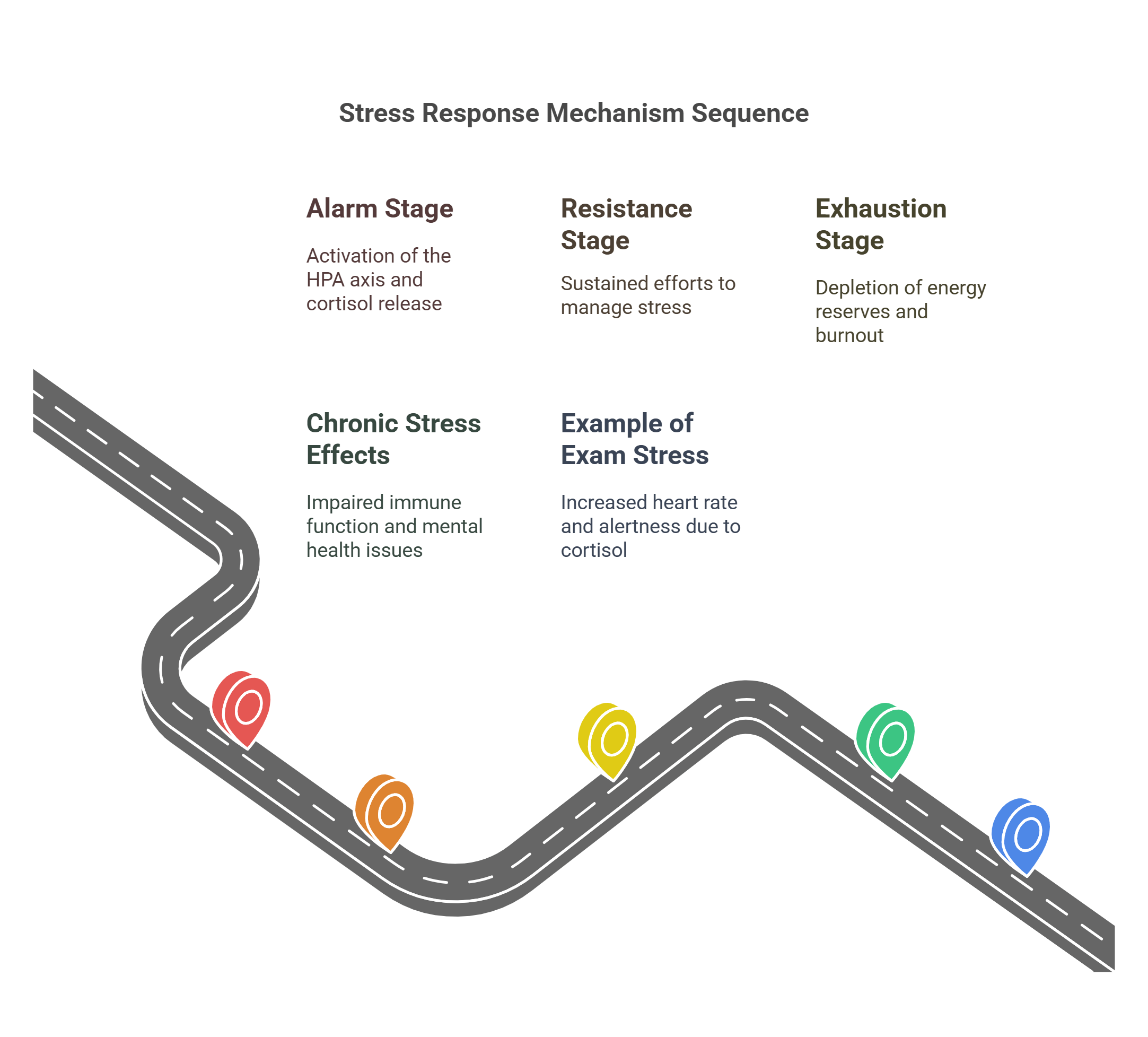
8. Neural Correlates of Emotion
Neural correlates of emotion refer to specific brain regions and networks that underlie emotional experiences.
- Key Brain Areas:
- Prefrontal Cortex: Regulates emotional responses and decision-making.
- Amygdala: Detects and processes emotional stimuli, especially fear.
- Applications:
- Understanding mood disorders such as anxiety and depression.
📘 Example: Overactivity in the amygdala is linked to heightened anxiety.
Explained Simply: Neural correlates of emotion are like the brain’s emotional circuits, shaping how we feel and respond.
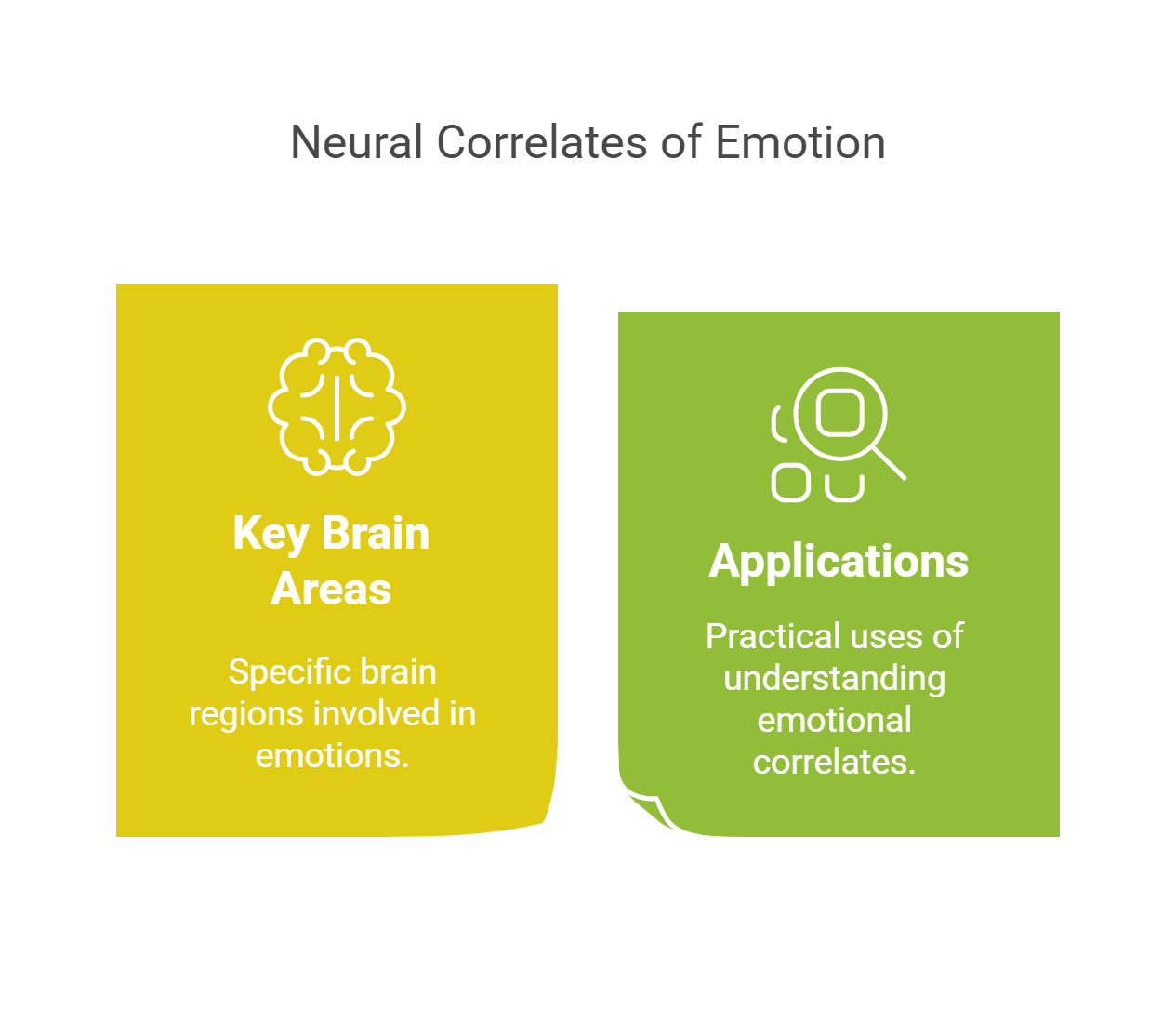
9. Brain Imaging Techniques
Brain imaging techniques allow scientists to visualize and study the structure and function of the brain.
- Key Techniques:
- MRI (Magnetic Resonance Imaging): Produces detailed images of brain structures.
- fMRI (Functional MRI): Measures brain activity by detecting blood flow changes.
- EEG (Electroencephalography): Records electrical activity in the brain.
- Applications:
- Diagnosing neurological disorders and mapping brain functions.
📘 Example: fMRI scans show increased activity in the visual cortex when viewing images.
Explained Simply: Brain imaging is like taking snapshots or videos of the brain in action.
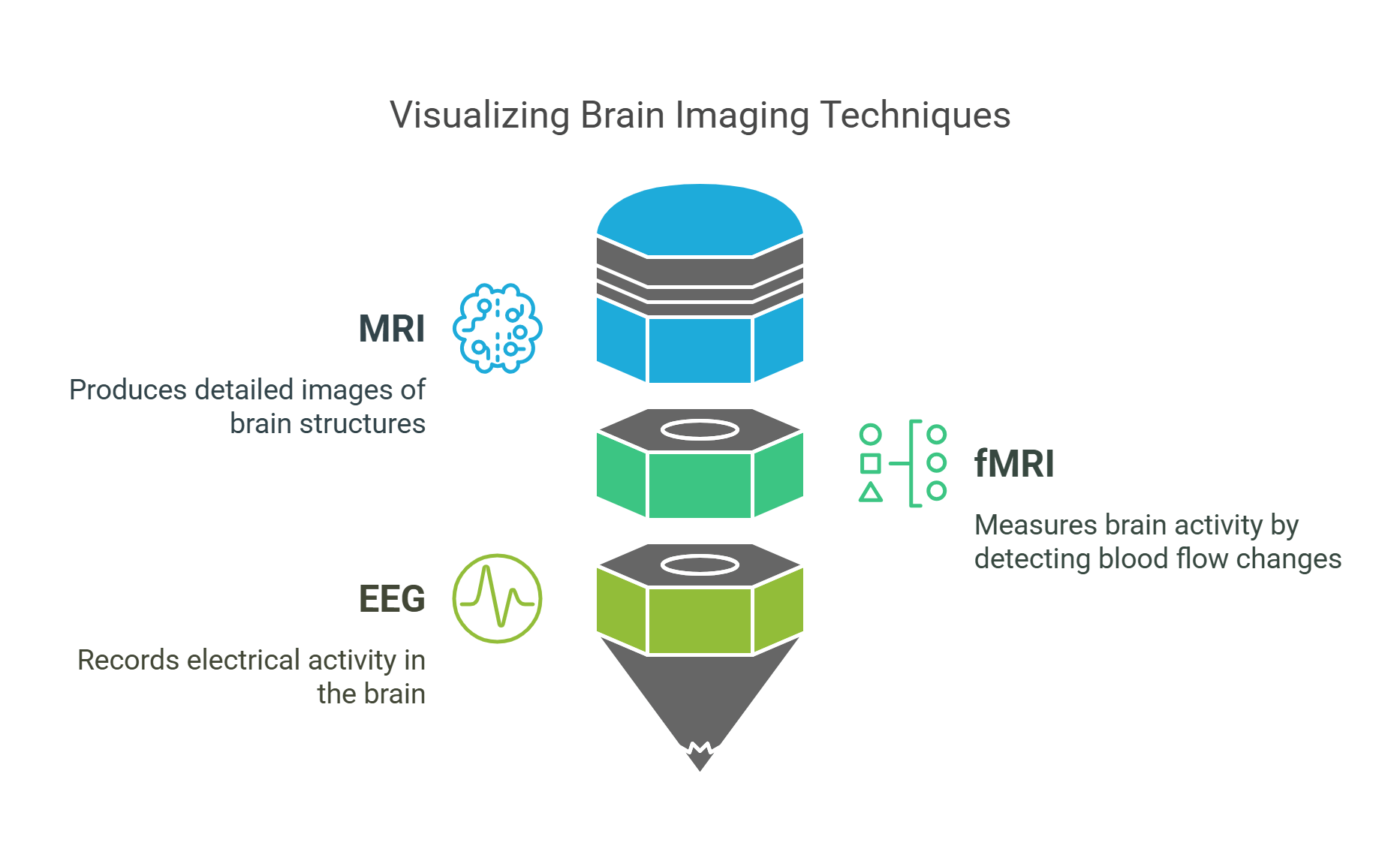
10. Circadian Rhythms
Circadian rhythms are biological cycles that follow a 24-hour pattern, regulating sleep, energy levels, and hormonal activity.
- Key Drivers:
- Controlled by the suprachiasmatic nucleus (SCN) in the hypothalamus.
- Influenced by light exposure.
- Applications:
- Understanding sleep disorders and jet lag.
- Designing work schedules to align with natural rhythms.
📘 Example: Melatonin levels rise in the evening, promoting sleep.
Explained Simply: Circadian rhythms are like the body’s internal clock, synchronizing activities with day and night.
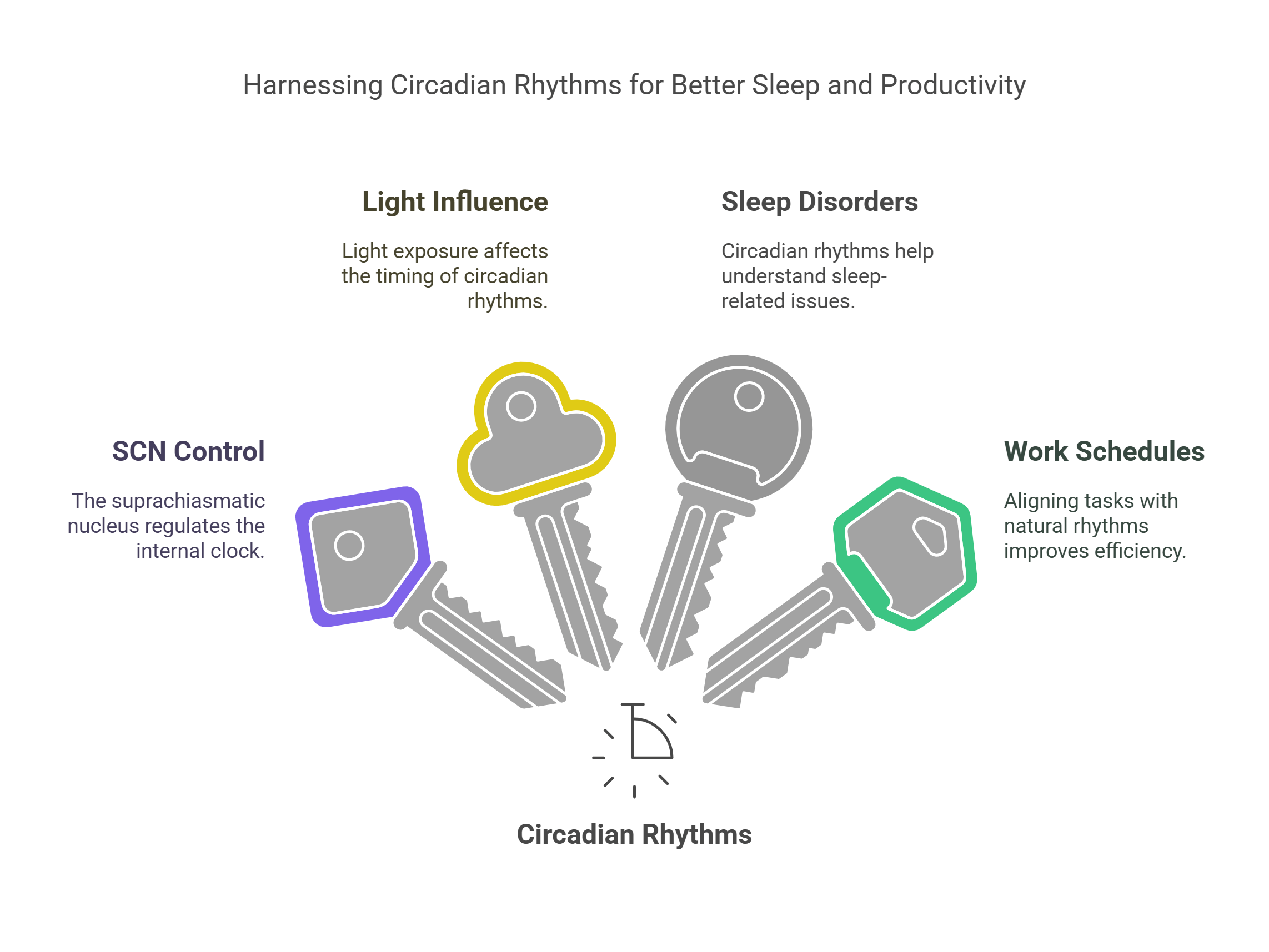
✨ Conclusion
Behavioral neuroscience unravels the complex connections between the brain and behavior. By understanding concepts like neuroplasticity, dopaminergic pathways, and brain imaging techniques, readers can analyze RC passages and real-world phenomena with greater clarity. This field bridges biology and psychology, offering profound insights into human thought, emotion, and action.










